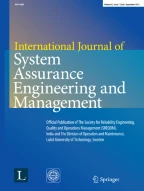Abstract
In this paper, we discussed the design restraint for designing implantable microstrip antenna (MSA) for body centric communication. We suggested an approach to design implantable MSA used for body centric communication. We also reported a multilayer MSA for medical implant communication services (MICS) band. A superstrate layer was kept to make certain the biocompatibility of the implanted antenna. The size of proposed MSA was small enough to implant into human head-scalp. Further the return loss characteristics for three different superstrate materials were carried out. We also investigated the return loss characteristics by changing substrate material between two radiating patches in firstly designed antenna for MICS band.
Similar content being viewed by others
References
Cosic I, Pirogova E, Vojisavljevic V, Fang Q (2006) Electromagnetic properties of biomolecules. FME Trans 34:71–80
European Radio-communications Commission Recommendation 70-03 Relating to the Use of Short Range Devices. In: European conference of postal and telecommunications administration, CEPT/ERC 70-03, Annex 12 (1997)
Establishment of a medical implant communications service in the 402–405 MHz band. Fed Regist Rules Regul 64(240):69926–69934
FCC (1996) FCC guidelines for evaluating the environmental effects of radio frequency radiation. FCC, Washington
Gabriel C, Gabriel S, Corthout E (1996) The dielectric properties of biological tissues. Phys Med Biol 41:2231–2293
Huang FJ, Lee CM, Chang CL, Chen LK, Yo TC, Luo CH (2011) Rectenna application of miniaturized implantable antenna design for triple-band biotelemetry communication. IEEE Trans Antennas Propag 59(7):2646–2653
Hebelka V (2012) Planar antennas in proximity of human body models. Elektrorevue 3(4). ISSN 1213-1539
ICNIRP, International Commission on Non-Ionizing Radiation Protection (1998) Guidelines for limiting exposure to time-varying electric, magnetic, and electromagnetic fields (up to 300 GHz). Health Phys 74:494–522
Karacolak T, Hood AZ, Topsakal E (2008) Design of a dual-band implantable antenna and development of skin mimicking gels for continuous glucose monitoring. IEEE Trans Microw Theory Tech 56(4):1001–1008
Kim J, Rahmat-Samii Y (2004) Implanted antennas inside a human body: simulations, design and characterization. IEEE Trans Microw Theory Tech 52(8):1934–1943
Kiourti A, Nikita KS (2012a) A review of implantable patch antennas for biomedical telemetry: challenges and solutions. IEEE Antennas Propag Mag 54(3):210–228
Kiourti A, Nikita KS (2012b) Miniature scalp-implantable antennas for telemetry in the MICS and ISM bands: design, safety considerations and link budget analysis. IEEE Trans Antennas Propag 60(8):3568–3575
Kiourti A, Christopoulou M, Kouloudis S, Nikita KS (2010) Design of a novel miniaturized PIFA for biomedical telemetry. In: International ICST conference on wireless mobile communication and healthcare. Ayia Napa, Cyprus
Kiourti A, Christopoulou M, Nikita KS (2011) Performance of a novel miniature antenna implanted in the human head for wireless biotelemetry. In: Proceeding IEEE international symposium antennas propagation, Spokane, WA, pp 392–395
Lin HY, Takahashi M, Saito K, Ito K (2013) Performance of implantable folded dipole antenna for in-body wireless communication. IEEE Trans Antennas Propag 61(3):1363–1370
Rawat S, Sharma KK (2014a) Stacked configuration of rectangular and hexagonal patches with shorting pin for circularly polarized wideband performance. Cent Eur J Eng Springer 4:20–26
Rawat S, Sharma KK (2014) Stacked elliptical patches for circularly polarized broadband performance. In: International conference on signal propagation and computer technology (ICSPCT 2014), pp 232–235
Rawat S, Sharma KK (2014c) A compact broadband microstrip patch antenna with defected ground structure for C-band applications. Cent Eur J Eng 4:287–292
Rawat S, Sharma KK (2015) Annular ring microstrip patch antenna with finite ground plane for ultra-wideband applications. Int J Microw Wirel Technol 7:179–184
Scarpello ML, Kurup D, Rogier H, Vande Ginste D, Axisa F, Vanfleteren J, Joseph W, Martens L, Vermeeren G (2011) Design of an implantable slot dipole conformal flexible antenna for biomedical applications. IEEE Trans Antennas Propag 59:3556–3564
Soontornpipit P, Furse CM, Chung YC (2004) Design of implantable microstrip antenna for communication with medical implants. IEEE Trans Microw Theory Tech 52(8):1944–1951
Ullah S et al (2009) A review of wireless body area networks for medical applications. Int J Commun Netw Syst Sci 2(8):797–803
Web link. http://www.ecse.monash.edu.au/staff/mehmety/WBSN.htm. Acceded June 2013
WMTS. http://en.wikipedia.org/wiki/Wireless_Medical_Telemetry_Service. Accessed 13 May 2013
Wong KL (2002) Compact and broadband microstrip antennas. Wiley, New York
IEEE (1999) IEEE standard for safety levels with respect to human exposure to radio frequency electromagnetic fields, 3 kHz to 300 GHz. IEEE Standard C95.1–1999
Sahu S et al (2013) Atomic water channel controlling remarkable properties of a single brain microtubule: correlating single protein to its supramolecular assembly. Biosens Bioelectron 47:141–148
Sahu S, Ghosh S, Fujita D, Bandyopadhyay A (2014) Live visualizations of single isolated tubulin protein self-assembly via tunneling current: effect of electromagnetic pumping during spontaneous growth of microtubule. Sci Rep 4:7303. doi:10.1038/srep07303
Author information
Authors and Affiliations
Corresponding author
Rights and permissions
About this article
Cite this article
Jain, L., Singh, R., Rawat, S. et al. Stacked arrangement of meandered patches for biomedical applications. Int J Syst Assur Eng Manag 9, 139–146 (2018). https://doi.org/10.1007/s13198-016-0491-6
Received:
Revised:
Published:
Issue Date:
DOI: https://doi.org/10.1007/s13198-016-0491-6
